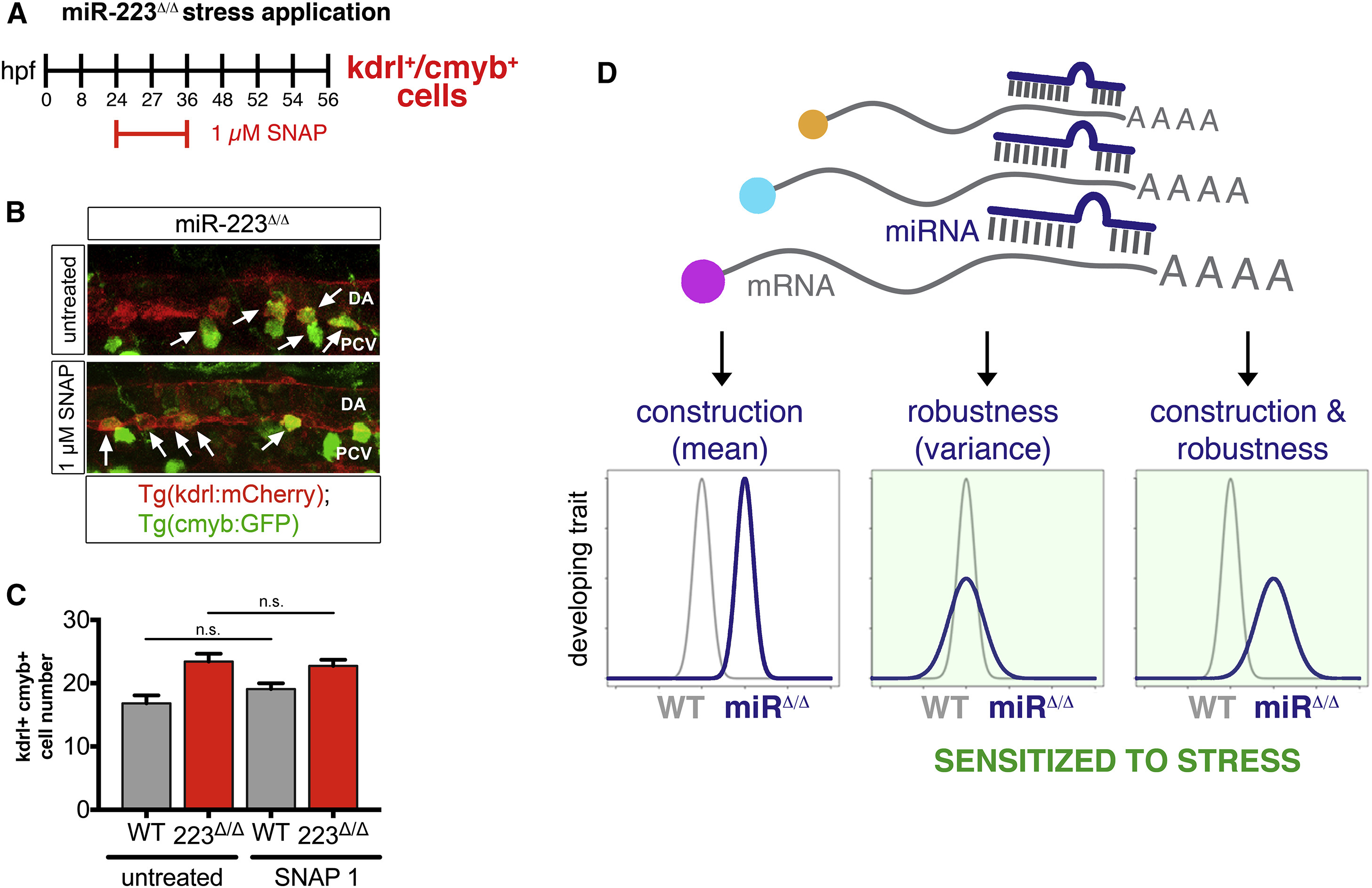Fig. 7
Phenotypic Heterogeneity Determines Trait Stress Sensitivity
(A) Schematic depicts the duration of nitric oxide donor SNAP exposure to test stress sensitivity of kdrl+cmyb+ cell number in the absence of miR-223 activity. SNAP was given at a low dose that minimally affects wild-type as indicated (see Table S1).
(B) Arrows show kdrl+cmyb+ cells budding from the DA ventral wall in untreated or SNAP-treated 36 hpf and miR-223 Δ/Δ (n = 11–12 embryos). 25× magnification.
(C) Bar plots represent mean kdrl+cmyb+ cell number ± SEM. n.s., not significant (p > 0.05), two-tailed Mann-Whitney U test.
(D) Proposed model for miRNA-mediated regulation of developing traits in vertebrates. miRNA targeting of single or multiple mRNAs in complex genetic networks can control the construction and/or robustness of a phenotypic trait. Upon loss of miRNA activity, a change only in phenotypic distribution (Gaussian or otherwise) predetermines a trait's sensitivity to changing environments.
Reprinted from Developmental Cell, 40, Kasper, D.M., Moro, A., Ristori, E., Narayanan, A., Hill-Teran, G., Fleming, E., Moreno-Mateos, M., Vejnar, C.E., Zhang, J., Lee, D., Gu, M., Gerstein, M., Giraldez, A., Nicoli, S., MicroRNAs Establish Uniform Traits during the Architecture of Vertebrate Embryos, 552-565.e5, Copyright (2017) with permission from Elsevier. Full text @ Dev. Cell

